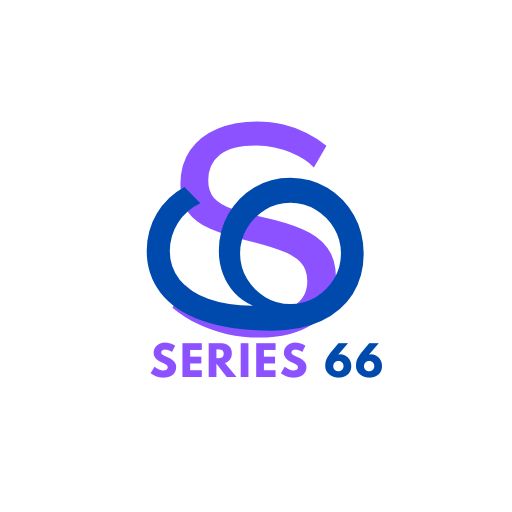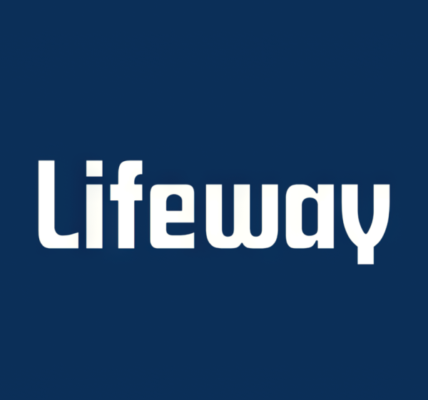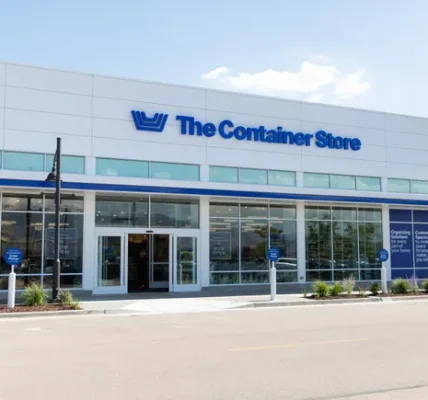Feature Twenty years ago next week, Oracle closed the $10.3 billion deal to buy HR and finance software specialist PeopleSoft after a fraught, drawn-out, hostile takeover.
It marked the high point in a period of tech industry takeover mania, and the zenith of Oracle’s transition from a database company which also does applications to a business apps giant also present in the database market. Days after its completion, Oracle announced it was laying off around half of PeopleSoft’s workforce.
“It was very dramatic,” Bo Lykkegaard, IDC associate vice president for enterprise software, told The Register. “The thing about the Oracle acquisition of PeopleSoft was that it was a hostile takeover. It was two very different cultures and a time when a lot of market consolidation went on. It was very large — the leading companies buying each other in the apps space — and the kind of takeover that I’d not seen before in that space.”
It was a deal nearly 18 months in the making. From mid-2003, Oracle had made overtures to the tune of a PeopleSoft acquisition. In early June of ’03, it launched a hostile bid, initially valued at $5.1 billion. Crucially, the move came only days after Peoplesoft had agreed a $1.7 billion share offer for JD Edwards, at the time one of the leading companies in ERP.
The sudden move irked both of the companies Oracle was proposing to buy in one move. On June 13 2003, JD Edwards filed a suit against Oracle in Colorado and another in California against Oracle’s voluble CEO Larry Ellison and executive vice president Chuck Phillips. In the action against Oracle the company, the ERP vendor sought $1.7 billion in damages for bad behavior.
A day later, PeopleSoft filed its own suit, alleging legal action against Oracle was the only way to protect its business against a “sham” takeover bid.
Poison pills and lawsuits
By June 18, Oracle raise its offer to $19.50 per share, or around $6.3 billion in cash. Oracle had hoped its bid would undermine PeopleSoft’s sales and compel shareholders to accept its offer. However, the HR and finance software vendor had other ideas. In July, PeopleSoft retaliated with a scheme that promised customers massive refunds on licenses should the deal go ahead, creating a so-called “poison pill” for Oracle to swallow along with its target company.
Later in July, the PeopleSoft-JD Edwards deal went through, having seen 88 percent of its shares tendered, making PeopleSoft the world’s second-largest enterprise software company and Oracle the third-largest. It put several new hurdles in Oracle’s way.
Users, too, were soon making their voices heard. In October 2003, users of Peoplesoft and JD Edwards ERP packages in Europe said they dreaded the Oracle acquisition. A survey found 95 percent did not want the bid to succeed.
In February the following year, Big Red raised its bid for Peoplesoft again, to $26 per share, valuing its target at $9.4 billion.
After a further knock-back from the PeopleSoft board later that month, Ellison began going over their heads to court the shareholders directly. In a letter, co-signed by then CFO Jeff Henley, Oracle said it was the “final price,” and a generous offer of “compelling value”, before attacking the PeopleSoft board of directors.
Then, the authorities got involved. On February 26, 2004, the US Department of Justice filed a suit to block the deal, alleging that it would result in higher prices, less innovation and fewer choices for customers.
The next month, the European Commission objected to the deal, while Oracle said it would work with the EU’s enforcer to allay its concerns.
In May, Oracle cut its bid for PeopleSoft by 20 percent from $26 to $21 per share, valuing its quarry at $7.7 billion rather than $9.4 billion.
In September of 2004, Oracle scored a stunning victory as a federal judge ruled that its hostile bid for Peoplesoft was not anticompetitive. The next month, the EC case went the same way.
Oracle then decided to up its offer again to a “best and final” offer of $24 per share – or just less than $9 billion. A few days later, the PeopleSoft board rejected this.
And then, it looked like Oracle might admit defeat. In a filing to a Delaware Court, Oracle said PeopleSoft’s poison-pill promise to give its customers between two to five times their licensing fees back following a takeover could scupper its bid.
“If the PeopleSoft board is permitted to continue to issue self-serving, entrenchment-motivated contracts under the revised money-back offer, Oracle may be forced to abandon its bid as it will no longer be economically viable,” the filing said.
Nonetheless, PeopleSoft investors opted to back the deal, with more than 60 percent tendering their shares to Oracle, giving the database maker the go-ahead to pursue its acquisition bid.
Armed with shareholder approval, Oracle continued with its legal claim to get the PeopleSoft board to remove the poison pill blocking the takeover.
Later in November, Oracle has put forth a list of four directors it wanted to nominate to PeopleSoft’s board as a lever to get its merger over the line. By the middle of December, 2004, PeopleSoft admitted defeat and accepted Oracle’s improved offer of $26.50 a share or $10.3 billion, roughly twice its original offer.
By the end of the year, PeopleSoft CEO David Duffield had resigned, and Oracle had parted with other senior executives including PeopleSoft CFO Kevin Parker, co-president W Phillip Wilmington, and chief marketing officer Nanci Caldwell, and went on to replace the PeopleSoft board.
The deal was finalized on January 7, 2005, and almost immediately, Oracle fired 5,000 PeopleSoft workers. Months later, Oracle acquired Siebel, the company that established the market for CRM software, for $3.61 billion, a deal it closed early the next year.
While Oracle’s E-business suite already gave it a presence in enterprise applications, so with the JD Edwards, Siebel and PeopleSoft mergers, it established deep hooks into the markets for CRM, ERP, HR and finance software.
Arguably, Big Red’s 2009 takeover of Sun Microsystems was equally significant, giving Oracle access to Sun’s high-end hardware, as well as the Solaris operating system, Java programming language, and MySQL database. That might be a story for another time, but the price was certainly lower at $7.4 billion.
Fusion food
It raises the question about why Oracle was prepared to pay so much for a rival application vendor and what happened next.
For a start, Oracle decided to play nicely with users. Through its Applications Unlimited policy, the vendor said it would provide comprehensive maintenance and software upgrades for its PeopleSoft, JD Edwards, and Siebel users — as well as users of its own E-Business Suite — until at least 2035.
Ok, so it is not unlimited in the literal sense, but it is more than some rivals. SAP, for example, only commits to providing mainstream support for its legacy ERP platform, ECC, until the end of 2027.
“There are still JD Edwards user groups, these guys are still out there. Applications Unlimited was one thing that ensured some consistency and stability for those acquired customers,” said IDC’s Lykkegaard. Nonetheless, Oracle does have a plan to move users of the applications it acquired to its own system. Launched in 2010, Oracle Fusion is a set of cloud-based applications the vendor claims is designed for the new fluffy platform from the ground up. The plan was to include features and functions from the Oracle E-Business Suite, JD Edwards, PeopleSoft, and Siebel products.
Lykkegaard said Oracle was the only one of the big applications companies to create a next-generation platform from scratch. “From one point of view, it devised a strategy and followed it,” he said.
But there were a few bumps along the road. “One of them was that Fusion was not originally intended as a cloud product, as in it was not really engineered for multi-tenancy. Oracle later architected Fusion as a cloud only, multi-tenant platform. So there was some big changes along the way.
“There was not like a beautiful, smoothly executed process, but Oracle did create a new, next generation enterprise application, which is the foundation for the cloud ERP you see today,” he said.
But JD Edwards users might not see familiar features and functionality in Fusion, he said. “JD Edwards was strong in certain verticals, such as food manufacturing and agriculture, and I’m not sure you can just replace that one-to-one,” he said.
Oracle’s Apps Unlimited policy, together with PeopleSoft and JD Edwards popularity among users, have created barriers to the preferred upgrade path.
Forrester industry research analyst Akshara Naik Lopez said within PeopleSoft users — and particularly JD Edward’s — there is a very strong base of customer dedicated to using individual products.
“In fact, we still see a very strong base of PeopleSoft clients, the clients who actually have not moved to the full stack offering by Oracle,” she told The Register. “What they are doing is modernization of their PeopleSoft applications by moving from on-prem to hosting it on hyper-scalers. We are seeing a big trend of Oracle E-Business Suite clients when they look for their next upgrade, move to Fusion ERP. But any time it’s a HCM-only discussion, with PeopleSoft clients, the decision is not just as straightforward as just going to Fusion HCM. They also consider the full HCM market and there are multiple options that are good competitors for Oracle in that space.
“If you look at the base of PeopleSoft and JD Edwards by themselves, they appear to be in no rush to move to Fusion or any other SaaS. They are taking their time because any time you talk about back office applications going from cap-ex to op-ex, it is a big shift for organizations,” Lopez said. “Although we’ve seen a steady adoption of SaaS in this space, it has not been exponential.”
Oracle’s giant PeopleSoft acquisition marked a wider consolidation in the enterprise software market: Lawson and Dutch ERP vendor Baan both became part of what would become Infor in ERP, HR software SuccessFactors became part of SAP, which also bought supply chain software Ariba and made investments in CRM. Oracle also went on to buy NetSuite, a cloud-only player for smaller enterprises.
But the mega-deal also saw a deeper integration in the software stack. Historically, SAP ERP systems — the 1990s’ R/3 for example — were available on multiple databases, including Oracle, SQL Servers and IBMs’ Db2. But its latest iteration of ERP software, S/4HANA is only available on its own in-memory database (HANA).
Oracle’s E-Business Suite was only ever available on its Oracle Database Enterprise Edition, but the applications its acquired with PeopleSoft continued to be supported on multiple databases. For example, Oracle JD Edward’s EnterpriseOne supports multiple databases including Db2 for i, DB2 UDB, Oracle, and Microsoft SQL Server. Until recently, PeopleSoft did more or less the same, although Oracle recently announced the retirement of the Db2 z/OS Database Platform for PeopleSoft.
With the market consolidation around SAP and Oracle, together with the move to an integrated SaaS stack, your enterprise applications are going to come with a database, whether you like it or not. SaaS-only Workday comes with its own in-memory database, and while older versions of Infor run on SQL Server and versions that derive from Lawson have also run on Db2, Infor has its own databases for SaaS.
Gartner vice president and analyst Chris Pang said CIOs tend do want to avoid being locked in, but once they had chosen an ERP system, they were effectively locked in by inertia, at least for a decade, and switching a database under an ERP system would be very rare indeed.
But the consolidation in the market and integration of the stack has created high barriers to entry, and less choice for users, particularly in ERP and supply chain.
While Oracle may not have shifted PeopleSoft and JD Edwards users to its own platform, it’s not necessarily a bad thing for the vendor.
“Oracle does not disclose numbers around the [on-prem install-base] but we estimate that it is certainly in the thousands of customers. It’s not on the same scale as SAP, but certainly, in terms of the margins which are being made on the support, it is significant, so from a shareholder perspective, and an Oracle perspective, that’s been a success. If you can keep the customer, and get them ready to move across, then that’s a win-win situation,” Pang told The Register.
Oracle declined the invitation to comment. In the 20 years since it finally closed the deal on one of the largest and hard-fought tech takeovers of the century, it might not have converted as many acquired customers to its preferred upgrade path as it would like. But then, through its generous support margins, it wins anyway. Enterprise users looking for more choice in the market might not see it the same way. ®





